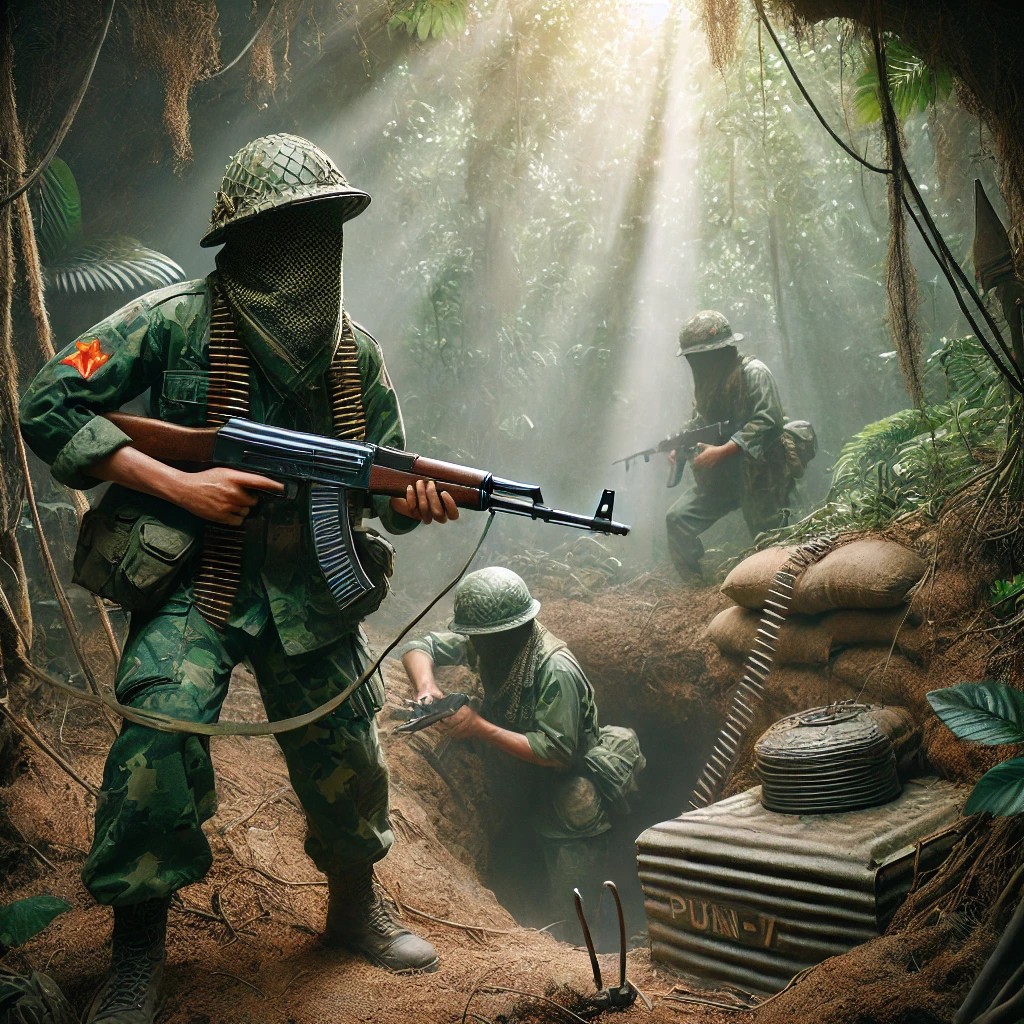The Vietcong Guerrilla Warfare (1955 - 1975)
The hell of the jungle

During the Vietnam War, the Vietcong proved that an army of peasants, armed with ingenuity and determination, could challenge and challenge a superpower like the United States. Secret tunnels, deadly traps and the jungle turned into a weapon: a lesson in resistance and strategy that changed history - Image generated with AI
During the bloody and devastating Vietnam War, American forces were confronted with the brutal guerrilla warfare of their communist adversaries, the Vietcong, who operated alongside the regular North Vietnamese troops. For the first time, the great American military power was checkmated by an army of peasants who, thanks to their profound knowledge of the terrain and guerrilla tactics, managed to defeat the American war machine.
One of their tactics was to quickly attack the American contingents and then quickly retreat into their shelters. For this purpose, the Vietcong built a dense network of tunnels that stretched for hundreds of kilometres and contained hospitals, dormitories, weapons and food stores. These tunnels allowed the guerrillas to move quickly and out of the reach of American artillery and air force, and then launch lightning-fast surprise attacks. Often the entrances to these tunnels were defended with explosive devices or death traps made from holes filled with pointed bamboo: simple yet extremely deadly traps known as ‘punji stakes’.
The Vietcong demonstrated an extraordinary ability to adapt to the natural environment and to exploit the Vietnamese jungle as a weapon for their cause. Their camouflage suits often allowed them to blend in and completely camouflage themselves with the natural landscape and the American army immediately found it difficult to deal with this type of conflict, also known as ‘asymmetrical warfare’.
The American reaction was brutal and dictated by the frustration of such an elusive enemy. Entire villages were destroyed, civilians slaughtered and the dreaded napalm bombs were dropped on the jungles, creating an inferno of flames to flush out the Vietcong. However, none of these tactics succeeded in breaking their ‘phantom enemy’. The Vietcong demonstrated how guerrilla warfare, backed by a strong ideology, could become an almost unbeatable weapon in war.
Translated with DeepL.com (free version)
Max, Hastings. Vietnam: An Epic Tragedy 1945-1975. Harpercollins, 2018.
Errico, De Gaetano. La guerra del Vietnam: Storia militare del conflitto più controverso del XX secolo. Diarkos Editori, 2022.
Toniatti Francesco
Master of Arts in International Relations - University of Leiden
Master of Arts in History and Oriental Studies - University of Bologna
2025-07-10
Francesco Toniatti
